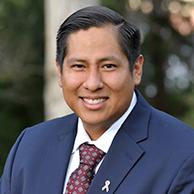Environmental Permitting Guide
This Environmental Permitting Guide is meant to serve as a quick reference tool to assist businesses in finding information on regulated business activities that impact the environment and serves as a comprehensive source of contact information for environmental regulators throughout the state.
Air Quality Impacts
- Dry Cleaning
- Commercial boilers, generators, heaters and incinerators
- Solvent Cleaners
- Paints or inks
- Toxic Chemicals
- Gasoline Sales and distribution
- Agriculture
- Automotive refinishing
For more information, consult the California Air Resources Board for businesses.
You can refer to our California Permitting Authorities Mapping Tool to identify what Air District boundary your business is located in. You can also visit the California Local Air District Directory.
Handling, Storing, or Transporting Hazardous Materials
For more information on hazardous waste, consult the California Department of Toxic Substances Control.
The Local Certified Unified Program Agencies (CUPAs) in California are charged with the responsibility of conducting compliance inspections and permitting for facilities that handle hazardous material, generate or treat a hazardous waste and/or operate an underground storage tank to minimize the potential risk to human health and the environment and establish an atmosphere to promote fair business practices. Contact your local CUPA program to determine what specific requirements are needed to adhere to. For more information consult the CUPA Program.
You can refer to our California Permitting Authorities Mapping Tool to identify what CUPA boundary your business is located in. You can also visit the CUPA Directory.
Water Quality Impacts (State and Regional Level)
Many businesses operating in California must comply with state and federal environmental requirements that protect water quality. Projects that involve discharges to waters of the State in more than one region are the jurisdiction of the State Water Board. The State Water Resources Control Board has jurisdiction throughout California. There are nine regional water quality control boards that exercise rulemaking and regulatory activities by basin. The regional water boards establish requirements for sources of waste discharge, including nonpoint sources and other sources exempted that have been exempted from federal permitting requirements. Projects that involve discharges to waters of the State in more than one region are the jurisdiction of the State Water Board. For more information consult the State Water Resources Control Board.
Water Quality Impacts (Federal Level)
The U.S. Army Corps of Engineers require permits for any work, including construction and dredging, in the Nation’s navigable waters.
Different Permit Types:
- Section 404 Permit: This permit is required when work involves a discharge of dredged or fill material into any waters of the United States.
- Section 10 Permit: This permit is required when working or erecting structures in or affecting navigable waters.This includes all waters affected by tidal influence or otherwise determined to be navigable.
For more information consult the U.S. Army Corps of Engineers.
You can refer to our California Permitting Authorities Mapping Tool to identify what Regional Water Quality Control Board boundary and Corps boundary your business is located in. You can also visit the Regional Water Quality Control Board Map.
You can also contact one of the following district offices for U.S. Army Corps of Engineers:
- San Francisco District – (415) 503-6771
- Sacramento District – (916) 557-5250
- Los Angeles District – (213) 452-3425
Treating, Handling, Disposing, or Storing Solid Waste
California Department of Resources, Recycling and Recovery (CalRecycle) Local Enforcement Agencies are designated by the governing body of a county or city and upon certification by CalRecycle, are empowered to implement delegated programs and locally designated activities. They have the primary responsibility for ensuring the correct operation and closure of solid waste facilities in the state. They also have responsibilities for guaranteeing the proper storage and transportation of solid wastes.
For more information, consult the CalRecycle for Full Solid Waste Facilities Permits.
You can refer to our California Permitting Authorities Mapping Tool to identify what Local Enforcement boundary your business is located in. You can also visit the LEA Directory.
Pesticide Sales and Use
The Pesticide and Food Toxicology Section of the Office of Environmental Health Hazard Assessment (OEHHA) carries out risk assessment and hazard evaluation activities related to pesticides and other chemical contaminants in food and consumer products. These include evaluating chemical contamination of raw agricultural commodities, processed foods, and environmental media in cases of accidental release. Staff within the program performs activities required by legislation to review risk characterizations prepared by DPR and to evaluate pesticide toxicity data in support of pesticide use and regulation in California.
For more information, visit:
You can refer to our California Permitting Authorities Mapping Tool to identify the County Agriculture/Weights & Measures Department boundary your business is located in. You can also visit the CDFA Ag Commissioners directory.
Fish, Wildlife, and Plant Habitat Impacts (State and Regional Level)
The California Department of Fish and Wildlife (CDFW) Environmental Review and Permitting Programs help fulfill CDFW’s mission to manage California’s diverse fish, wildlife, and plant resources, and the habitats upon which they depend, for their ecological values and for their use and enjoyment by the public.
The California Endangered Species Act (CESA) Program authorizes CDFW to permit project proponents to take(hunt, pursue, catch, capture, or kill, or attempt to hunt, pursue, catch, capture, or kill) state-listed threatened, endangered or candidate species if certain conditions are met. The CESA Program administers the incidental takeprovisions of CESA, including special agreements such as Safe Harbor Agreements and Voluntary Local Programs, to ensure regulatory compliance and statewide consistency.
The CDFW also requires a Stream Alteration Agreement (SAA) for projects that will divert or obstruct the natural flow of water, obstruct or use any material from a streambed. Any work undertaken in or near a river, stream, or lake that flows at least intermittently through a bed or channel usually requires an SAA. If you have any uncertainty about the need for an SAA you should contact the Department’s Regional Office in your area.
Fish, Wildlife, and Plant Habitat Impacts (Federal Level)
Agencies consult with the USFWS, the National Marine Fisheries Service and State wildlife agencies (i.e. the CDFW) for activities that affect, control, or modify waters of any stream or bodies of water. The USFWS may recommend denial of a permit application, the incorporation of additional permit conditions to minimize adverse effects, or mitigation actions. In addition, the Fish and Wildlife Service functions in an advisory capacity to the Army Corps of Engineers.
The USFWS administers licenses and permits at regional offices and certain port locations to authorize and monitor activities consistent with the conservation, protection and enhancement of wildlife, plants and their habitats. The regions also consider the risks and benefits of proposed activities to species and use the best available science and expertise to make decision.
You can refer to our California Permitting Authorities Mapping Tool to identify the USFWS regional boundary your business is located in. You can also visit the USFWS Pacific Southwest Region.
Coastal Development
The coastal zone extends from the State’s three-mile seaward limit to an average of approximately 1,000 yards inland from the mean high tide of the sea. In coastal estuaries, watersheds, wildlife habitats, and recreational areas, the coastal zone may extend as much as five miles inland. In developed urban areas, the coastal zone may extend inland less than 1,000 yards. As defined by the Coastal Act, developmentincludes land, in or under water, the placement or erection of any solid material or structure; discharge or disposal of any dredge material or a gaseous, liquid, solid, or thermal waste; grading, removing, dredging, mining or extraction of any material; change in the density or intensity of use of land (including land diversions); construction, reconstruction, demolition, or alternation of the size of any structure; and the removal or harvesting of major vegetation other than for agricultural operations, kelp harvesting, and timber operations which are in accordance with a Timber Harvest Plan issued by the California Department of Forestry and Fire Protection.
You can refer to our California Permitting Authorities Mapping Tool to identify if your business is located within the coastal zone.
1325 J Street, Suite 1800
Sacramento, CA 95814
Email CalOSBA
About Us
Access Resources
Find a Local Small Business Advisor




















































